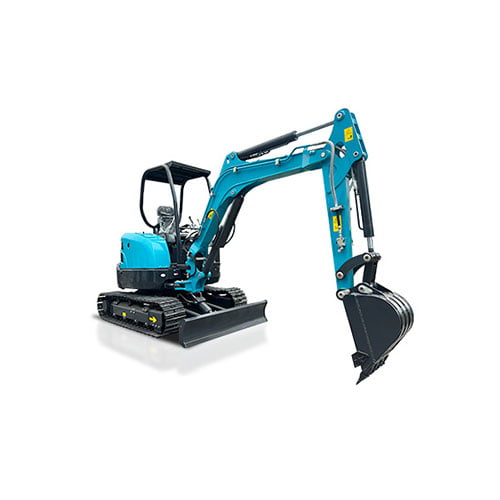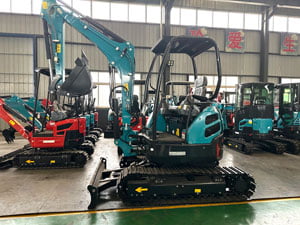Welcome to My Blog!
Before we dive into the content, I’d love for you to join me on my social media platforms where I share more insights, engage with the community, and post updates. Here’s how you can connect with me:
Facebook: https://www.facebook.com/profile.php?id=100072217509763
LinkedIn: https://www.linkedin.com/company/74949059/admin/dashboard/
YouTube:www.youtube.com/@tractormanufacturer-lc5qz,www.youtube.com/@excavatormanufacturers-sn9hk
TikTok: www.tiktok.com/@tractormanufacturer, www.tiktok.com/@excavatormanufacturers
Now, let’s get started on our journey together. I hope you find the content here insightful, engaging, and valuable.
Table of Contents
Introduction

Digging holes manually can be a physically demanding and time-consuming task, especially when dealing with tough, compacted, or rocky soil. Whether you’re installing fence posts, planting trees, setting foundation footings, or working on large-scale construction projects, traditional digging methods can lead to fatigue and inconsistent results. Fortunately, using an auger for a tractor can transform the digging process, making it faster, more precise, and significantly less labor-intensive.
This powerful attachment is designed to penetrate various soil types efficiently, reducing the effort required to complete excavation tasks. It ensures uniform hole sizes, increases productivity, and minimizes the strain on workers, making it an essential tool for farmers, landscapers, and contractors alike. Additionally, compared to manual digging or alternative machinery, an auger offers enhanced control, precision, and depth consistency, making it the preferred choice for those who require high-quality results.
In this blog, we will delve into the numerous advantages of using an auger for a tractor, compare its performance to other digging methods, highlight key features to consider when selecting one, and address frequently asked questions about its operation and maintenance. By the end, you’ll have a comprehensive understanding of why an auger is a valuable investment for any digging project.
NO 1: Why Choose an Auger for a Tractor?
Many property owners, farmers, and contractors rely on this powerful digging tool to streamline their excavation tasks. Compared to manual labor or alternative machinery, it offers several distinct advantages:
- Efficiency: Capable of penetrating the ground swiftly, it significantly reduces work time.
- Consistency: Produces uniform holes, which is particularly important for fence installation, planting, and foundational support.
- Versatility: Performs well across a range of soil conditions, including clay, sandy areas, and rocky ground.
- Reduced Labor: Minimizes the physical exertion required for traditional digging methods, helping users avoid fatigue.
For individuals and businesses that frequently need to create holes for agricultural, landscaping, or construction projects, incorporating this equipment into daily operations can be a transformative decision.
NO 2: Key Features to Consider When Selecting an Auger for a Tractor

Selecting the right digging implement requires careful evaluation of key features to ensure it meets specific project needs:
- Drill Bit Size:Available in multiple diameters, allowing users to choose the most suitable option for different applications.
- Material and Durability: Constructed from high-strength steel, ensuring resistance to wear and long-term performance.
- Hydraulic or PTO Drive: The power source determines compatibility with different tractors and influences drilling efficiency.
- Depth Capacity: Maximum drilling depth varies, so it’s essential to match the tool’s capabilities with the demands of the task.
- Ease of Attachment: A well-designed mounting system simplifies installation and removal, enhancing usability.
Understanding these critical aspects helps users make an informed purchase decision, ensuring that the equipment meets both immediate and future project requirements.
NO 3: How an Auger for a Tractor Compares to Other Digging Methods
When it comes to excavation, there are multiple digging methods available, each with its own advantages and drawbacks. However, an auger for a tractor stands out as one of the most efficient and precise tools for digging holes. It not only reduces labor intensity but also ensures uniform hole sizes, making it ideal for a wide range of applications, from agriculture to construction.
Below is a comparison of common digging techniques based on efficiency, precision, labor intensity, and suitability for large projects:
| Digging Method | Efficiency | Precision | Labor Intensity | Suitability for Large Projects |
|---|---|---|---|---|
| Manual Digging | Low | Moderate | High | Not Ideal |
| Post Hole Diggers | Moderate | Moderate | High | Limited |
| Excavators | High | Low | Low | Good for Large-Scale Work |
| Auger for a Tractor | High | High | Low | Excellent for Various Applications |
Why an Auger for a Tractor is the Superior Choice
- Efficiency: Unlike manual digging, which can take hours and require significant physical effort, an auger operates quickly and penetrates the soil with ease, dramatically reducing work time.
- Precision: Excavators may be powerful, but they often lack the accuracy needed for digging uniform holes. An auger, on the other hand, provides consistent hole depth and diameter, making it perfect for tasks like installing fence posts or planting trees.
- Labor Reduction: Traditional methods, including post hole diggers, can be exhausting and inefficient, especially for large-scale projects. Using an auger minimizes strain on workers and allows them to complete more work with less effort.
- Versatility: Whether you’re dealing with clay, sand, rocky terrain, or compacted soil, an auger for a tractor can handle different ground conditions with the right bit attachment, making it suitable for various applications.
By examining these factors, it’s clear that an auger for a tractor is a highly efficient, reliable, and cost-effective solution for digging tasks, making it the preferred choice over other conventional methods.
NO 4: Proper Maintenance to Extend the Lifespan of an Auger for a Tractor

To ensure long-lasting performance and prevent unexpected breakdowns, regular maintenance is essential. Proper care not only improves efficiency but also extends the lifespan of the equipment. Below are key maintenance practices to keep it in top condition:
- Clean After Use: After every operation, remove soil, debris, and any remaining moisture from the drill bit and frame. This prevents buildup that could lead to clogging and rust formation over time.
- Inspect for Damage: Before and after each use, check the cutting edges, drill bit, and mounting points for signs of wear, cracks, or dullness. Addressing minor issues early prevents costly repairs later.
- Lubricate Moving Parts: Apply grease or lubricant to rotating and moving parts, such as the gearbox and drive components, to minimize friction and reduce wear. This ensures smoother operation and prevents overheating.
- Store Properly: Keep the equipment in a clean, dry location when not in use. If stored outdoors, cover it with a protective tarp to shield it from rain, snow, and extreme weather conditions that could cause corrosion.
- Tighten Loose Components: Periodically inspect bolts, nuts, and connections to ensure they remain secure. Vibrations during operation can loosen fasteners, leading to performance issues or potential safety hazards.
Sharpen or Replace Worn Blades: If the cutting edges become dull, sharpen them to maintain effective drilling. If excessive wear is present, replacing the blades ensures optimal performance.
By following these maintenance practices consistently, users can keep their digging equipment in peak condition, reducing downtime and maximizing productivity.
Conclusion
An auger for a tractor is an indispensable tool for anyone who needs to dig holes efficiently and precisely. Whether you are a farmer, contractor, or property owner, this attachment simplifies digging projects and saves time, energy, and resources. By selecting the right auger and following proper maintenance practices, you can enjoy long-term benefits and enhanced productivity. If you are tired of frustrating and labor-intensive digging, investing in an auger for a tractor is the solution you need.
FAQ
Q1: Can an auger for a tractor be used in rocky soil?
Yes, but the effectiveness largely depends on the type of auger and the power of your tractor. Standard augers may struggle with dense or rocky terrain, but there are specialized models with reinforced drill bits designed to cut through hard ground. Tungsten carbide or heavy-duty steel tips can improve performance in rocky conditions. Additionally, operating the auger at a steady speed and applying consistent downward pressure can help navigate through tougher soil.
Q2: What size auger bit should I choose?
The right size depends on the nature of your project. For installing fence posts, an auger bit between 6 to 12 inches in diameter is typically sufficient. If you’re planting trees or setting deep foundation supports, larger sizes—ranging from 18 to 36 inches—may be necessary. Before purchasing, consider both the hole width required and the weight capacity your tractor can handle to ensure compatibility.
Q3: How deep can an auger for a tractor dig?
The digging depth varies based on the model and design of the auger. Most standard augers can reach depths of 3 to 6 feet, which is suitable for most fencing and small-scale construction projects. However, if deeper holes are required, extension shafts can be attached to increase the drilling depth. Always ensure that your tractor has the necessary hydraulic or PTO power to support deeper digging operations.
Q4: Is it difficult to attach an auger to a tractor?
No, most augers are designed with user-friendly mounting systems that make attachment and detachment relatively simple. Many models are equipped with a three-point hitch system, allowing them to connect directly to a tractor’s rear. Hydraulic or PTO-driven augers may require additional setup, such as securing hoses or power shafts, but overall, the process is straightforward. If you’re unfamiliar with the installation, following the manufacturer’s manual or watching instructional videos can make the process easier.
Q5: Can I use an auger for a tractor in wet soil?
Yes, an auger can be used in wet soil, but some precautions should be taken. Wet soil is heavier, denser, and more prone to clumping, which can create additional resistance during drilling. Using a powerful auger with high torque output will make it easier to penetrate damp ground. Additionally, operating the auger at a slower speed and lifting it periodically during drilling can help prevent soil clogging and excessive strain on the equipment.




